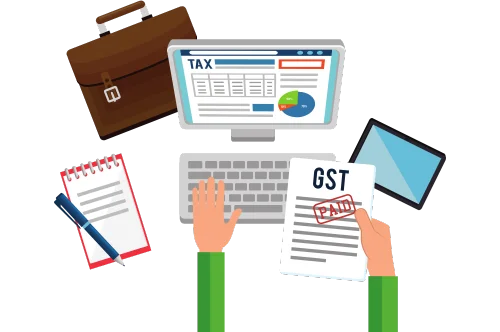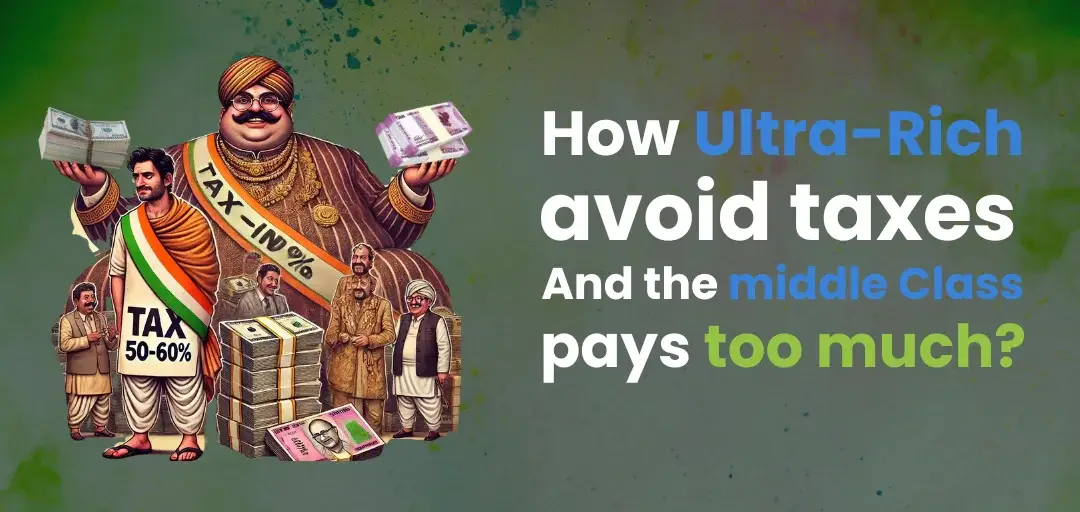Ultra-Rich Tax Avoidance While the Middle Class Pays Too Much
Taxation has long been a topic of heated debate, with questions about fairness and equity often taking center stage. One of the most glaring issues is the stark contrast in how the ultra-rich manage to pay little to no taxes, while the middle class bears a disproportionately heavy burden. This blog explores the mechanisms that allow the wealthy to minimize their tax obligations and highlights why the middle class ends up paying a larger share.
The Tax System: An Uneven Playing Field
The tax systems in many countries, including India, the United States, and others, are ostensibly progressive—meaning that higher earners are expected to pay a larger percentage of their income in taxes. However, the reality is far different.
The ultra-rich employ sophisticated tax strategies, legal loopholes, and financial instruments to drastically reduce their effective tax rates. Meanwhile, the middle class, with limited access to such tools, ends up paying a significant share of their earnings as taxes, including income tax, GST, and other indirect taxes. This reflects a clear case of ultra-rich tax avoidance.
How the Ultra-Rich Avoid Taxes
Leveraging Capital Gains
Instead of earning a traditional salary, many ultra-rich individuals derive their income primarily from investments. Capital gains tax rates are often much lower than income tax rates. For example, in India, long-term capital gains on equities are taxed at 10% (above the exemption limit), whereas the highest income tax slab for individuals is 30%. This disparity allows the wealthy to significantly reduce their tax liability.Indian Example: Prominent business magnates in India often rely on dividends and capital gains from their vast equity holdings. By strategically selling shares during favorable tax conditions, they ensure minimal tax impact. This is a prominent form of ultra-rich tax avoidance.
Offshore Accounts and Shell Companies
Offshore tax havens like the Cayman Islands, Bermuda, and Luxembourg provide avenues for the wealthy to stash their income away from the tax authorities. By setting up shell companies, they can route profits through low-tax jurisdictions, avoiding higher domestic taxes.Indian Example: Several investigative reports, such as the Panama Papers, have exposed Indian celebrities and industrialists holding offshore accounts to shield their wealth from taxes. Such tactics are classic examples of ultra-rich tax avoidance.
Using Trusts and Foundations
Trusts and charitable foundations are another popular tool. By placing their wealth in trusts or creating foundations, the ultra-rich can reduce their taxable estate and income. While these entities often perform legitimate charitable work, they also serve as a tax shield, enabling ultra-rich tax avoidance.Debt Financing
The ultra-rich often borrow against their assets, such as stocks or real estate, to finance their lifestyles. Loans are not considered taxable income, allowing them to access money without triggering a tax event.Indian Example: Wealthy business tycoons in India frequently use promoter financing, borrowing against shares of their listed companies to fund personal or business ventures without liquidating their holdings. This is another method of ultra-rich tax avoidance.
Corporate Structures
Many wealthy individuals operate through corporations, which are taxed at lower rates than personal income in many jurisdictions. By reinvesting profits into their businesses or paying themselves minimal salaries, they minimize their personal tax burden.
Example: Elon Musk and Jeff Bezos
In 2021, investigative reports revealed that billionaires like Elon Musk and Jeff Bezos paid minimal federal income taxes in the U.S. despite their vast wealth. Jeff Bezos, for instance, paid no federal income tax in 2007 and 2011, while Elon Musk paid nothing in 2018. They achieved this by strategically timing their asset sales, using deductions, and borrowing against their wealth. Such cases highlight ultra-rich tax avoidance.
Indian Example: Vijay Mallya and Nirav Modi
While their cases are often associated with fraud, they also highlight how the ultra-rich exploit systemic loopholes. By routing funds through offshore entities and complex corporate structures, they evaded significant tax obligations. This is another glaring example of ultra-rich tax avoidance.
The Tax Burden on the Middle Class
In contrast, the middle class—largely dependent on salaries—cannot escape taxes as easily. Here’s why:
Income Tax
Middle-class individuals have their income tax deducted at the source (TDS). With limited deductions available, they end up paying a significant portion of their earnings.Indirect Taxes
Goods and Services Tax (GST), excise duties, and other indirect taxes disproportionately affect the middle class. For example, while the ultra-rich spend a smaller percentage of their income on consumables, the middle class often pays a higher share due to essential expenses like food, clothing, and fuel.Indian Example: An average Indian family earning INR 10 lakhs annually pays not only INR 1.1 lakhs as income tax but also a substantial amount in GST on daily essentials, which often totals an additional 18-28%. Ultra-rich tax avoidance exacerbates this disparity.
No Access to Tax Havens
Unlike the ultra-rich, the middle class has no means to utilize offshore accounts, trusts, or complex financial instruments. They rely on basic tax-saving instruments like Provident Fund (PF), which offer limited benefits.Rising Living Costs
Inflation and rising costs of essential services such as healthcare, education, and housing exacerbate the financial strain on the middle class, leaving them with less disposable income after taxes.
Why This Disparity Exists
The disparity between how the ultra-rich and the middle class are taxed is not accidental. It is the result of:
Complex Tax Laws: Tax codes are often riddled with loopholes that favor those who can afford high-quality tax advisors.
Lobbying Power: The ultra-rich and corporations exert significant influence over policymakers, shaping tax laws to their advantage.
Limited Enforcement: Tax authorities often lack the resources to go after the wealthy, focusing instead on salaried individuals who are easier to audit.
The Need for Reform
To address these inequities, several measures can be implemented:
Tax Wealth, Not Just Income
Introducing or increasing wealth taxes can ensure that the ultra-rich contribute more. For instance, taxing unrealized capital gains or implementing higher estate taxes could bridge the gap.Close Loopholes
Simplifying tax codes and closing loopholes that allow offshore tax avoidance and excessive deductions can increase fairness. Addressing ultra-rich tax avoidance should be a priority.Progressive GST
Implementing a more progressive GST structure, where luxury goods are taxed at higher rates while essentials are taxed minimally or exempted, could ease the burden on the middle class.Strengthen Enforcement
Governments should invest in resources to audit and enforce tax compliance among the wealthy effectively.
Conclusion
The stark contrast between how the ultra-rich avoid taxes and how the middle class bears the brunt of the tax burden highlights the need for systemic reform. While the wealthy exploit loopholes and sophisticated financial tools, the middle class continues to shoulder a disproportionate share of taxes. Addressing this imbalance requires political will, robust enforcement, and a commitment to creating a truly equitable tax system.
By implementing measures such as taxing wealth, closing loopholes, and making indirect taxes more progressive, governments can ensure that the tax system serves everyone fairly. The conversation about “ultra-rich tax avoidance” is not just about fairness; it’s about creating a society where everyone contributes their fair share.
Our GST Services

All E-commerce Tax services
E-commerce tax services help online sellers navigate GST registration, compliance, return filing, TCS management, tax planning, and audits, ensuring efficient tax management and legal compliance.

GST Filing
GST filing is the process of submitting tax returns to the government, detailing sales, purchases, and taxes paid or collected, ensuring compliance with GST laws.

GST Registration
GST registration is the process where businesses obtain a GSTIN from the government, allowing them to collect taxes, claim input tax credits, and comply with GST laws.





